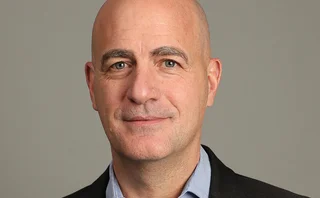
Index provider of the year: Standard & Poor's
The index space is undergoing rapid evolution. Global equity benchmarks are converging at a rate of knots and the drive towards a focus on niche indexes shows no signs of abating. At the forefront of the changes is index provider Standard & Poor's (S&P), which identified the trend early and has constructed the S&P Global Thematic Index family, a range of distinctive indexes that provide liquid exposure to global and emerging investment themes, cutting across traditional industry definitions and geographical boundaries.
John Davies, London-based senior director, index services Europe at S&P, believes that the index business is heading for a dramatic change over the next few years and that indexes face further commoditisation. "The game is going to be fought on a different level with future indexes becoming more customised, thematic and niche."
The S&P Global Thematic Index family forms part of S&P's alternative market approach, which has attracted a large number of structured product issuances worth in excess of EUR500 million as of the second quarter this year. The family comprises the Global Clean Energy, Water, Infrastructure, Timber and Forestry, Alternative Energy, Nuclear, Listed Private Equity, and Property 40 indexes.
The many structured product and exchange-traded fund (ETF) issuers that have constructed products linked to the index family include Lehman Brothers, Citi, Goldman Sachs, Deutsche Bank and UBS.
Lehman, for example, created the 95% Lehman Brothers capital-protected certificate linked to the S&P Listed Private Equity Index. "We knew that S&P would provide a very reliable and transparent index and service," says Mohamed Yangui, London-based executive director, equity derivatives at Lehman Brothers. "We have also created products on the S&P Global Infrastructure Index and Global Clean Energy Index."
The Listed Private Equity Index comprises 25 listed private equity companies and is designed to provide tradable exposure to the leading publicly listed private equity companies. Stocks in the index must have a total market capitalisation above the threshold of $250 million and must be traded on a developed market exchange.
The focus on alternative and clean energy within the thematic index family mirrors the increasing demand for more esoteric and environmentally friendly themes on which to base structured products. The burgeoning environmental sector will undoubtedly attract further indexation, says Davies. A prime example is the clean energy index, which comprises 30 of the biggest publicly traded companies in the clean energy industry, covering production, equipment and technology. Other environmentally-focused indexes include the alternative energy, nuclear and water indexes.
Property indexes also proved popular. "We chose to use the S&P Global Property 40 Index because no other index that tracked listed global property was liquid enough," says David O'Donoghue, executive director, risk management products at UBS. "Products today have moved away from focusing on innovation in payoffs and instead concentrate more on innovative and thematic underlyings, such as the Property 40 Index."
The index provides liquid exposure to 40 publicly traded companies in the global property and real-estate market. It is a subset of the S&P/Citigroup Global Property Index and comprises stocks domiciled in the US, Canada, western Europe, Singapore, Hong Kong, Japan, Australia and New Zealand.
Davies says that alternative sectors such as nanotechnology and biotechnology will eventually come to market, as well as opportunities for thematic indexes in China.
Beyond the thematic index family, S&P has further expanded its Shariah Index Series, which provides opportunities to create structured products tailored to the needs of Islamic finance. Indexes brought to market in the past year include the S&P GCC Shariah, the Pan Asia Shariah, the Pan Arab Shariah, the Bric Shariah and the S&P/Citigroup Global Property Shariah. The indexes are created in response to client demand and used by organisations in the Middle East and Europe to build structured products, ETFs and index funds.
In February, S&P acquired the Goldman Sachs Commodity Index - now renamed the S&P GSCI - and two equity index families from Goldman Sachs. An estimated $60 billion in institutional investment funds track the S&P GSCI. The index was created in 1991, comprises 24 commodities and is designed to provide investors with a reliable and publicly available benchmark for investment performance in the commodity markets.
Only users who have a paid subscription or are part of a corporate subscription are able to print or copy content.
To access these options, along with all other subscription benefits, please contact info@risk.net or view our subscription options here: http://subscriptions.risk.net/subscribe
You are currently unable to print this content. Please contact info@risk.net to find out more.
You are currently unable to copy this content. Please contact info@risk.net to find out more.
Copyright Infopro Digital Limited. All rights reserved.
You may share this content using our article tools. Printing this content is for the sole use of the Authorised User (named subscriber), as outlined in our terms and conditions - https://www.infopro-insight.com/terms-conditions/insight-subscriptions/
If you would like to purchase additional rights please email info@risk.net
Copyright Infopro Digital Limited. All rights reserved.
You may share this content using our article tools. Copying this content is for the sole use of the Authorised User (named subscriber), as outlined in our terms and conditions - https://www.infopro-insight.com/terms-conditions/insight-subscriptions/
If you would like to purchase additional rights please email info@risk.net
More on Awards
Joining the dots: banks leverage tech advancements for the future of regulatory reporting
The continued evolution of regulatory frameworks is creating mounting challenges for capital markets firms in achieving comprehensive and cost-effectiveawa compliance reporting. Regnology discusses how firms are starting to use a synthesis of emerging…
Markets Technology Awards 2024 winners' review
Vendors spy opportunity in demystifying and democratising – opening up markets and methods to new users
Derivatives house of the year: JP Morgan
Risk Awards 2024: Response to regional banking crisis went far beyond First Republic
Risk Awards 2024: The winners
JP Morgan wins derivatives house, lifetime award for El Karoui, Barclays wins rates
Best product for capital markets: Murex
Asia Risk Awards 2023
Technology vendor of the year: Murex
Asia Risk Awards 2023
Best structured products support system: Murex
Asia Risk Awards 2023
Energy Risk Asia Awards 2023: the winners
Winning firms demonstrate resiliency and robust risk management amid testing times
Most read
- Top 10 operational risks for 2024
- Top 10 op risks: third parties stoke cyber risk
- Japanese megabanks shun internal models as FRTB bites







